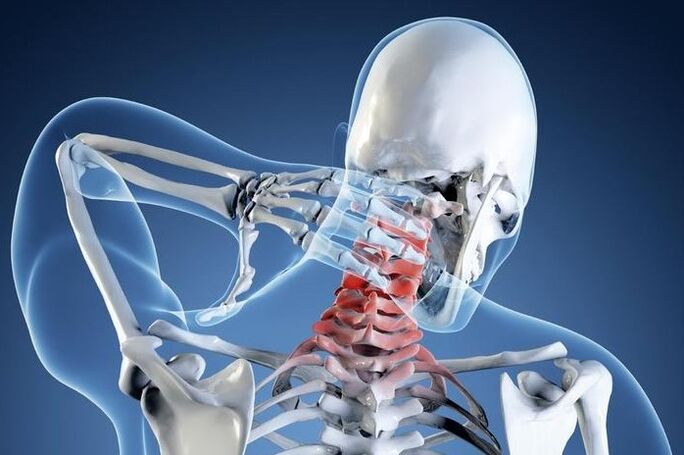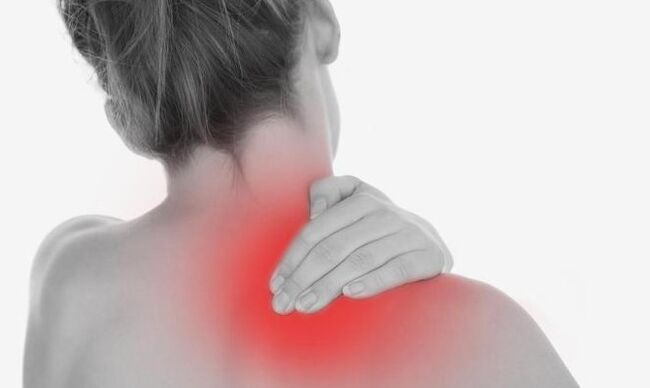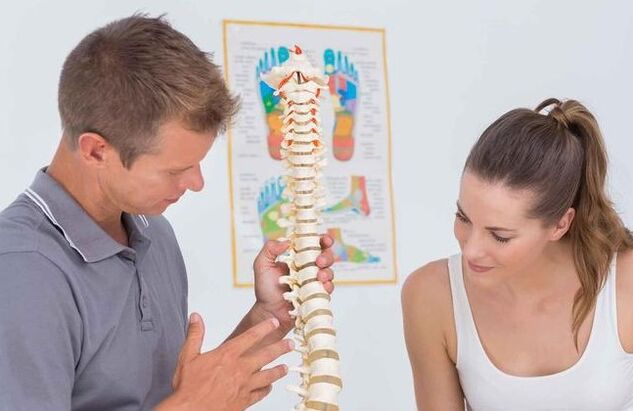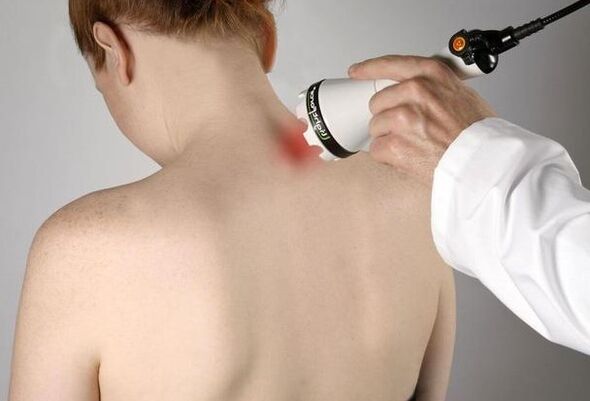About 30 years ago, osteochondrosis was associated exclusively with people with an advanced age, whose joints become inactive and injured with any movement. However, times have changed. Today, more and more people are changing hard physical labor for a stuck work on the computer, they are increasingly monitoring the quality of food and increasingly meeting osteochondrosis of the cervical hotel. No wonder osteochondrosis is called a "disease of the century" and almost every person who is 25 years old encounters the symptoms of this disease.
This is a treacherous disease, starting with unpleasant neck pain, very quickly leads to severe effects in the form of hearing and vision weakening, as well as to impair memory until it is completely lost. Therefore, each person should know the causes of osteochondrosis and consult a doctor in a timely manner in case of unpleasant symptoms of the disease. We will talk about them in this article.
It is paradoxical that all our problems with the cervical spine begin at an early age or more recently in elementary school, where the child worsens posture and scoliosis. It is at this point that the system for maintaining the head of the spine is disturbed, more special, the most fine and vulnerable department -the cervical. The second key factor for the osteochondrosis of the cervical region, which begins its in the long childhood, is insufficient physical preparation, in particular the weakness of the spinal muscles and the so -called muscle corset designed to maintain the spine.
These are two most important causes of the disease. All others with heavy loads fall on a weakened spine, provoking the development of the disease in quite young and healthy people. First, they include a sedentary lifestyle and lack of physical activity, more special work, which is associated with a long stay in one position. This is most characteristic of drivers and office workers replacing the computer. All this is complemented by excess body weight, which seriously increases the load on the spine.
Of other causes of osteochondrosis of the cervical spine, it must be distinguished:
The listed adverse factors eventually lead to an increase in the load of the cervical spine. When they try to compensate for excessive strain on the neck muscles, their spasm occurs, leading to a disruption of blood circulation in this area and a decrease in metabolic processes. All this becomes the development of degenerative processes in the spine. First of all, the vertebrae begin to become thinner and approach, pulling their contents (a fibrous ring) outside the spine. Such a convexity of the language of the doctors is called a convexity.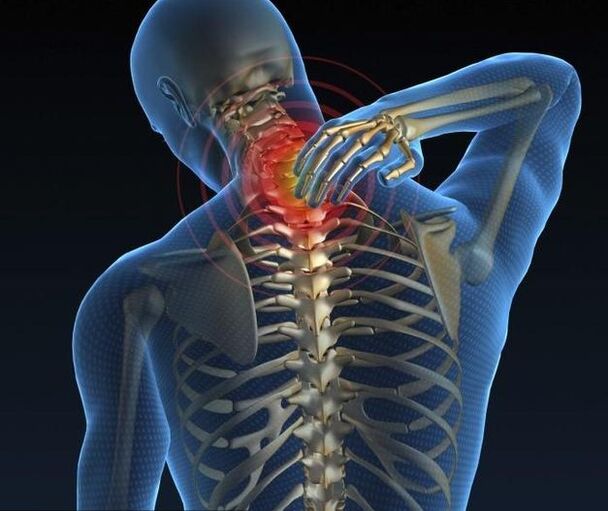
In the case of convexity, the fibrous ring still retains its integrity, but the convex squeezes the blood vessels and nerves that pass along the spine and feed the brain. Moreover, the rapprochement and deformation of the vertebrae begins to squeeze the roots of the peripheral nerves, leading to the development of the so -called "radicular syndrome", which manifests with severe back and neck pain. If you do not identify the problem (which unpleasant symptoms will be eloquently signaling) and do not start treating osteochondrosis, the fibrous ring will break and the hernia of the vertebrae will appear. In this case, serious problems with brain nutrition will arise.
In its development, the disease passes several stages, each of which has characteristic characteristics and symptoms. It should be noted here that osteochondrosis of the cervical spine differs from degenerative changes in other parts of the spine. The distances between the vertebrae here are minimal and therefore even small degenerative changes cause unpleasant symptoms and lead to various complications.
First degree osteochondrosis.This is the preclinical stage of the development of the disease, in which the patient experiences mild pain and discomfort during turns of the head, as well as tension and rapid fatigue in the neck and back with prolonged dialing in one position (often in a stuck). At this stage, osteochondrosis is perfectly treated with a change in lifestyle, eating correction and regular exercise. Grade II osteochondrosis.At this stage, instability between the vertebrae in the neck appears. In this case, one faces intense pain that is given to the shoulder, neck or arm. During inclinations or bends of the head, the pain increases significantly, because due to the decrease in the distance between the vertebrae, the nerve endings begin to disturb. The patient begins to get tired quickly, his performance decreases, dissipates, the oblivion appears, and he is struggling with headaches. Osteochondrosis of grade III.With the onset of the third stage of the disease, the pain in the back and neck becomes even more severe, the mobility of the neck decreases significantly and when the neck is rotated, a crispy vertebrae can be heard. At night, the patient begins to tingle with his fingers (mostly a small finger and a ring), which is why a person wakes up several times a night. Throughout the day, such patients have an unpleasant weight in their hands. And even a brief conversation on the phone in which a person is forced to hold a mobile phone near his ear becomes an unpleasant tingling and tingling in his fingers. All this indicates an increase in convexity and possibly the appearance of hernia in the cervical region. Osteochondrosis of grade IV.At the last stage of the disease, vertebrates are destroyed, which stop performing their functions and begin to be replaced by connective tissue. A patient in this condition can observe a violation of movement coordination, noise occurs and the pulsation in the ears is crazy, the headache increases, visual acuity and hearing are reduced. In some cases, tongue numbness may be observed. It must be said that due to the transfer of blood vessels, the blood flow to the brain is disturbed. Therefore, the patient has neurotic disorders such as insomnia, nervousness, irritability and resentment, frequent changes in mood and inability to concentrate. The outbreak of anger or fear can occur periodically to attack longing and depression. In the short stages of the development of osteochondrosis, the most strong cramps of blood vessels can lead to the appearance of "flies" in front of the eyes, a feeling of instability on a solid, flat surface, strong dizziness, migraine, nausea, vomiting and frequent adhesion. To identify the cause of the pathology, the patient describes the unpleasant symptoms of the doctor to his or her condition. After hearing the patient, the specialist sends it to one of the following examination methods. Radiography.Currently, this diagnostic method is considered uninformative, especially in the last stages of the development of the disease. Ultrasound duplex scan. This method is used in cases where a specialist involves impaired blood flow to the arteries that give the brain to food. The study shows the blood flow and determines whether there are obstacles on its path. CT (computed tomography).This method is more informative than radiography as it not only reveals the problem, but also allows you to determine the presence and size of hernia, albeit with difficulty. MRI (magnetic resonance).The most information method for diagnosing osteochondrosis, which allows you to equalize bone structures, the presence of hernia and even the direction of their development. We will immediately say that in order to fight such a serious problem as the osteochondrosis of the cervical region, you must consult a neurologist. It is true that if the clinic has a doctor in a vertebologist, it is better to contact him first. You can only treat osteochondrosis. The complex of used methods includes drug therapy, cervical zone massage, exercise therapy, physiotherapy methods, and proper nutrition. Only the combination of all these methods will help to deal with the disease and normalize the patient's behavior well. In the case of severe pain syndrome, doctors recommend taking analgesics. When these agents cease to bring relief, you can switch to non -steroidal anti -inflammatory drugs. In a general sense, drug therapy includes the following agents: It should be noted here that it is possible to achieve a tangible effect in the fight against osteochondrosis with the help of ointments and tablets only if treatment with drugs is combined with other methods of therapy. Otherwise, the medicines will only have a temporary effect. Many experts tend to treat osteochondrosis with injections to quickly affect nerve endings and save the patient from possible side effects when taking tablets. However, vitamins are best taken because vitamins are well absorbed by the body with any method of administration, but injections can be painful. Treatment with drugs should be combined with physiotherapy methods of therapy. The most effective in this disease is considered: The restoration of the affected vertebrae also includes a special diet that normalizes the metabolic processes in the body, prevents the deposition of salts, nourishes and restores cartilage tissue, and also strengthens bonds between vertebrates. In order to achieve this, first of all, the patient's diet should be excluded: The diet of an osteochondrosis patient should consist of the following food: When you locate osteochondrosis in the cervical region, it is important to stick to the drinking regimen by drinking at least 1, 5 liters of water a day. If there is an excess weight, then you should think about how to get rid of excess weight, which provide extra load on the spine. It is advisable to switch to power 5 times a day in small portions. At the same time, as can be seen from the list of products authorized for use, the basis of the food should be low in vegetarian soups, cooked meat, fish, fish, seafood, unsweetened vegetables and fruits. The approximate menu for the day will look as follows: Physical education gives incredible results in the treatment of osteochondrosis, the truth is to participate in gymnastics for the cervical spine only during the recovery period. It is important here that in the process of massage or gymnastics the patient does not experience discomfort and pain. Here are some most effective gymnastic exercises aimed at strengthening the cervical muscles and improving blood circulation in this area. Exercise Number 1Lying on your stomach and resting your hands on the floor, slowly lift your head and torso so that your back remains straight. Hold in this position for 1 minute, then return to the starting position. The element is repeated 2-3 times. Exercise number 2Lying on your stomach and stretching your hands on your body, lift your head slightly and start rotating it first to the right, trying to touch the floor with your ear, then to the left. Perform 6 turnover in each direction. Exercise number 3Sitting on the floor, inspiration, lean forward, trying to get to your chin to your chest and exhale, go back to the starting position and throw your head back. Repeat the item 10-15 times. Exercise Number 4Attach your palms to your forehead and try to put pressure on your head with effort. At the same time, the tension of the neck muscles, resist your hands, preventing the head from rejecting. Hold the pressure for 20-30 seconds, then lower your hands and relax. Repeat the element 2-3 times and then repeat the exercise in the opposite direction, giving your hands to grip on the back of the head. Exercise Number 5Start slowly turning your head to the right and left, trying to look behind your back. Make 10 rpm in each country. Good health!